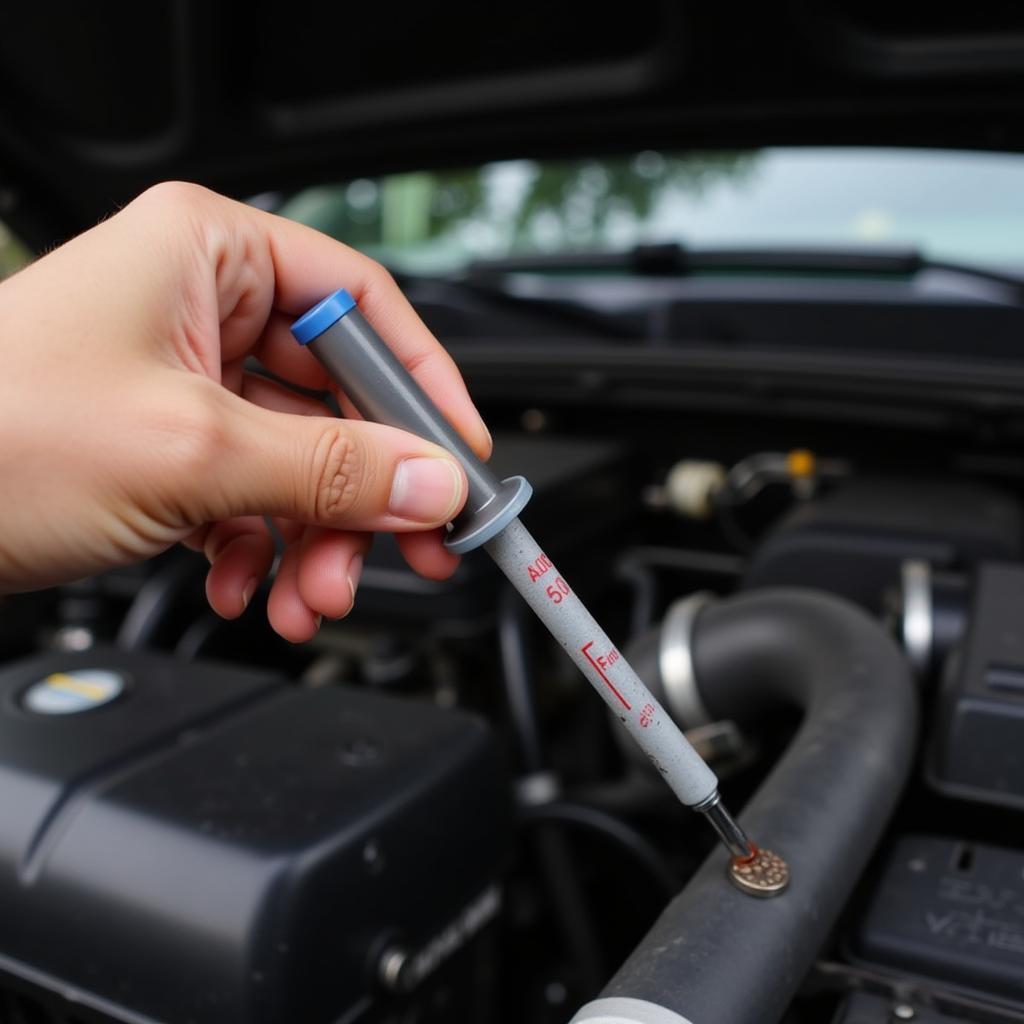Modern vehicles rely heavily on complex electronic systems. Understanding and addressing Electronic Problems In Car is crucial for both car owners and mechanics. From faulty sensors to wiring issues, these problems can manifest in various ways, impacting performance, safety, and overall driving experience. This guide delves into common electronic issues, diagnostic techniques, and potential solutions.
Common Electronic Problems in Car
Electronic systems control everything from the engine and transmission to the entertainment system and safety features. Identifying the source of the problem can be challenging. Some common electronic problems in car include: car problems symbols. Here are a few more examples:
- Malfunctioning sensors: Sensors throughout the vehicle provide data to the car’s computer. A faulty sensor can disrupt various systems, from the engine to the anti-lock brakes.
- Wiring issues: Damaged or corroded wiring can disrupt the flow of electricity, leading to erratic behavior or complete system failure.
- Battery problems: A weak or failing battery can cause a host of electrical gremlins, from dimming headlights to difficulty starting.
- Alternator issues: The alternator recharges the battery and powers the electrical system while the engine is running. A malfunctioning alternator can drain the battery and cause electrical problems.
- ECU malfunctions: The Engine Control Unit (ECU) is the brain of the car’s electronic systems. A faulty ECU can cause a wide range of issues.
Diagnosing Electronic Problems in Car
Diagnosing these problems often requires specialized tools and knowledge. OBD-II scanners are invaluable for retrieving diagnostic trouble codes (DTCs) which pinpoint the source of the problem. However, interpreting these codes and applying logical troubleshooting steps are essential for effective repairs.
Using an OBD-II Scanner
An OBD-II scanner connects to the car’s diagnostic port, typically located under the dashboard. The scanner retrieves DTCs stored in the ECU. These codes correspond to specific faults within the car’s electronic systems.
- Understanding DTCs: Each DTC consists of a letter and four numbers. The letter indicates the system affected (e.g., P for powertrain, B for body, C for chassis, U for network). The numbers identify the specific fault within that system.
- Beyond the Codes: While DTCs provide a starting point, they don’t always tell the whole story. Further investigation, such as visual inspection of wiring and components, is often necessary.
Checking Wiring and Connections
Visual inspection of wiring and connections is a crucial step in diagnosing electronic problems. Look for signs of damage, corrosion, or loose connections. A simple loose connection can cause significant problems. If you encounter vacuum issues, especially if it affects gear shifting, consider reviewing this resource: vacuum problem car not shifting.
- Cleaning Connections: Cleaning corroded connections with a specialized contact cleaner can often resolve intermittent electrical issues.
- Wiring Repair: Damaged wiring may need to be repaired or replaced. This often requires specialized tools and knowledge.
DIY vs. Professional Repair
Some electronic problems in car can be addressed by DIY enthusiasts, while others require the expertise of a qualified mechanic. Simple tasks like checking fuses, cleaning battery terminals, or replacing a faulty sensor might be manageable for DIYers. However, more complex issues involving wiring repairs, ECU malfunctions, or intricate electronic systems should be handled by professionals. If your car exhibits symptoms like pulsing, it could be linked to emission problems. Learn more about it here: can emissions problems cause my car to pulse. And for those encountering the car symbol problem on their older Nokia phones, this article might offer insights: nokia 1110 car symbol problem. For those keen on understanding the root cause of smog issues in their vehicles, exploring this link would be beneficial: how to find out whats causing smog problems on car.
Conclusion
Electronic problems in car can range from minor annoyances to major headaches. Understanding the basics of car electronics, using diagnostic tools like OBD-II scanners, and knowing when to seek professional help are essential for keeping your vehicle running smoothly. Feel free to reach out to AutoTipPro at +1 (641) 206-8880 or visit our office at 500 N St Mary’s St, San Antonio, TX 78205, United States for assistance with your electronic problems in car.






Leave a Reply